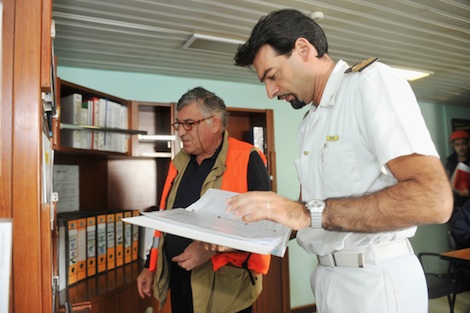Enclosed spaces… testing, entry and rescue - have you covered the basics?
Both the Tokyo and Paris MoUs have announced a joint Concentrated Inspection Campaign into Crew Familiarization for Enclosed Space Entry will begin on 1 September. Mark Robinson evaluates its impact, both immediate and residual, for SuperyachtNews.com.…
The Maritime Authorities of the Tokyo and the Paris Memorandum of Understanding (MoU) on Port state control will be launching a joint Concentrated Inspection Campaign (CIC) on Crew Familiarization for Enclosed Space Entry. The campaign will be held for three months, commencing 1 September 2015.
Port state control inspectors will be using a 10-point check list to ascertain whether crewmembers are familiar with equipment, training and whether they can identify and understand the hazards associated with entry into enclosed spaces.
But in essence it’s not just about satisfying the authorities is it? Surely it’s about saving lives that are being needlessly cast away through poor training, lacklustre approaches to risk assessment and broken safety management systems.
Most safety management systems have in place a permit to work for various operations on board that present more risk than most; hot work, working aloft, working over the side of the vessel and so on. Included in this list of prepared permits to work is ‘entry into enclosed spaces’.
A permit to work is not a risk assessment.
Code Of Safe Working Practices (COSWP) has excellent guidance of how to undertake a risk assessment, but all too many times we see that a basic understanding of what this involves is lacking.
The understanding of 'ALARP' is in most cases met with blank faces. But 'As Low As Reasonably Practicable' is the bedrock of a good risk assessment.
Once the formal assessments have been created, covering every aspect of risk to human life and the environment; from preparation to testing, training, use of equipment, number of crew, lighting, entering, monitoring and exit and not forgetting rescue, the permit should be drawn up detailing the procedures that mitigate all perceived risks to ALARP. Like a risk assessment, a permit to work should be regarded as a live document and should be subject to scrutiny on a regular basis. To underpin their importance they should be an agenda item for your safety committee meetings.
Risk assessments aside, information about enclosed space entry and rescue can be disseminated in many ways around your vessel – it does not only have to be in the safety management system or Mini ISM safety management system.
Does your vessel specific SOLAS training manual have a section dedicated to entry and rescue from an enclosed space; does it detail the equipment that is carried for testing atmospheric conditions? Does it detail where the equipment is stowed for rescue, the equipment used for safe extraction etc. Does your crew familiarisation checklist cover enclosed space entry? Is there a training session dedicated to entry into enclosed spaces for newly appointed crewmembers? Does your Muster list detail certain crewmembers for enclosed space rescue? Does your annual training and drill matrix incorporate the frequency of drills as required by SOLAS Chapter III Reg.19?
Flag administrations are acutely aware of the dangers of enclosed space entry and through the announcement of this concentrated inspection campaign some flag states are looking to include non-SOLAS yachts i.e. yachts less than 500GT that hold a Mini-ISM to follow as much as reasonably practical, the requirements and procedures required for SOLAS/Code compliant yachts. The Republic of the Marshall Islands Administration, for example, has released Marine Notice 7-041-1 detailing their requirements.
NEW: Sign up for SuperyachtNewsweek!
Get the latest weekly news, in-depth reports, intelligence, and strategic insights, delivered directly from The Superyacht Group's editors and market analysts.
Stay at the forefront of the superyacht industry with SuperyachtNewsweek
Click here to become part of The Superyacht Group community, and join us in our mission to make this industry accessible to all, and prosperous for the long-term. We are offering access to the superyacht industry’s most comprehensive and longstanding archive of business-critical information, as well as a comprehensive, real-time superyacht fleet database, for just £10 per month, because we are One Industry with One Mission. Sign up here.
NEW: Sign up for
SuperyachtNewsweek!
Get the latest weekly news, in-depth reports, intelligence, and strategic insights, delivered directly from The Superyacht Group's editors and market analysts.
Stay at the forefront of the superyacht industry with SuperyachtNewsweek





